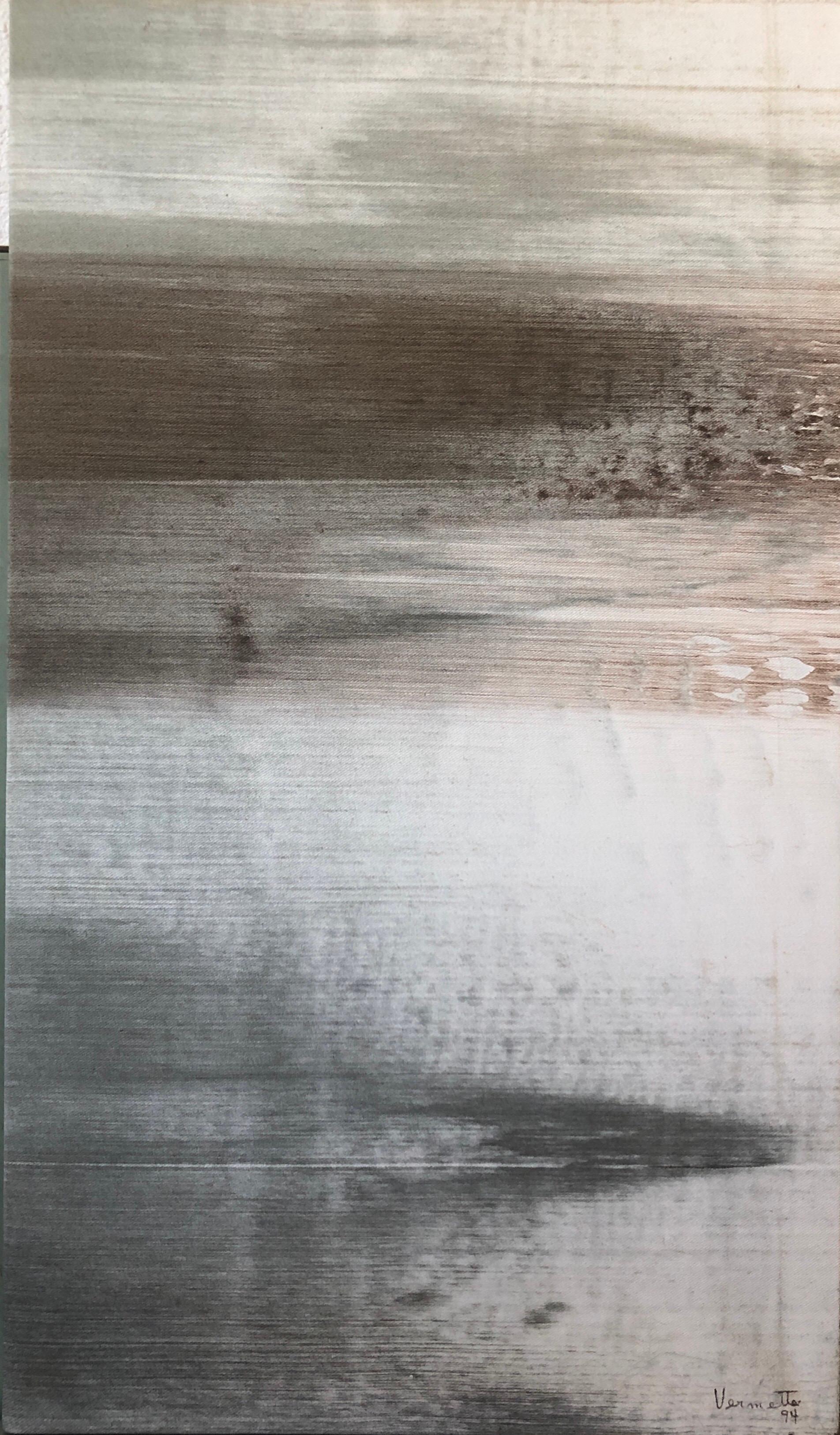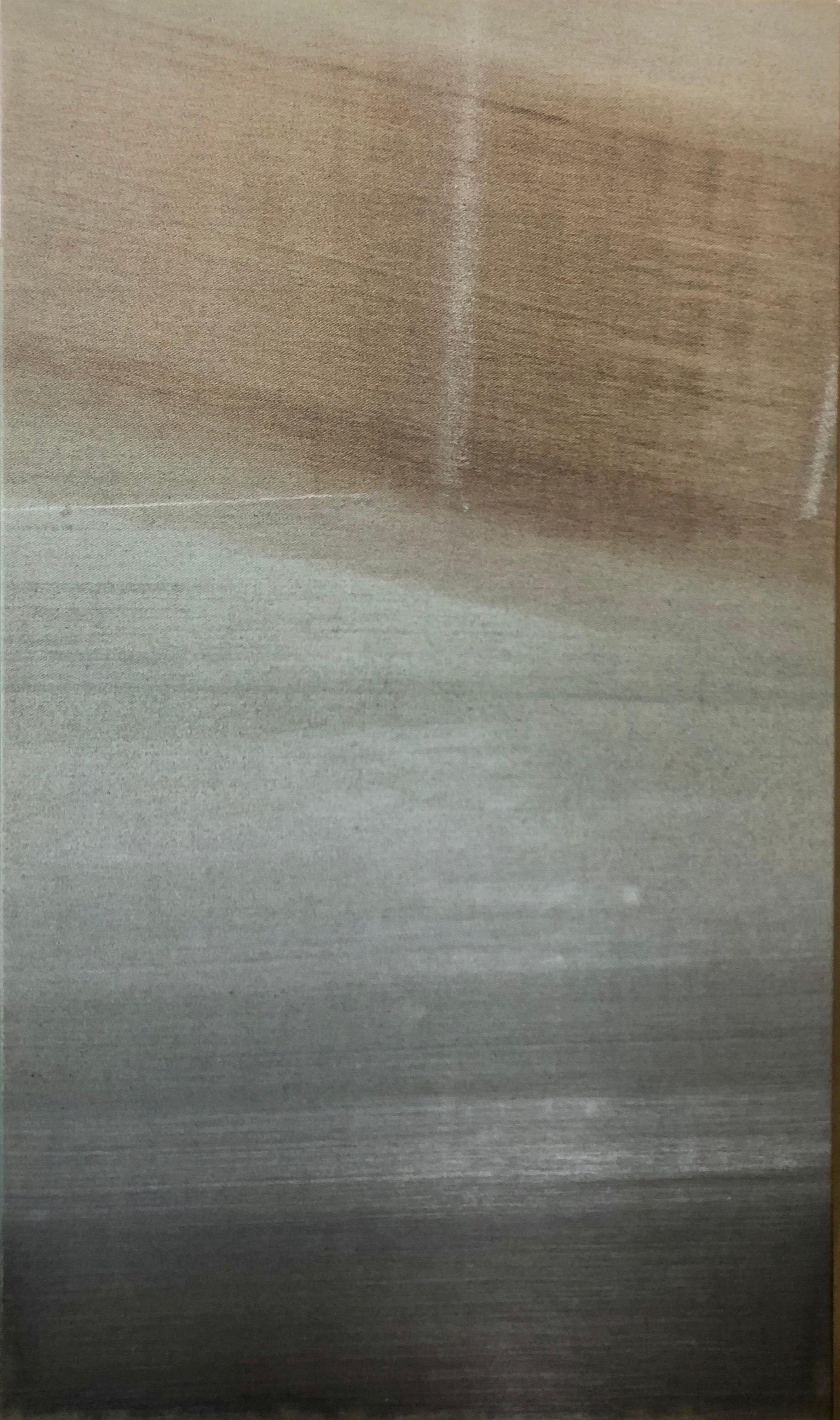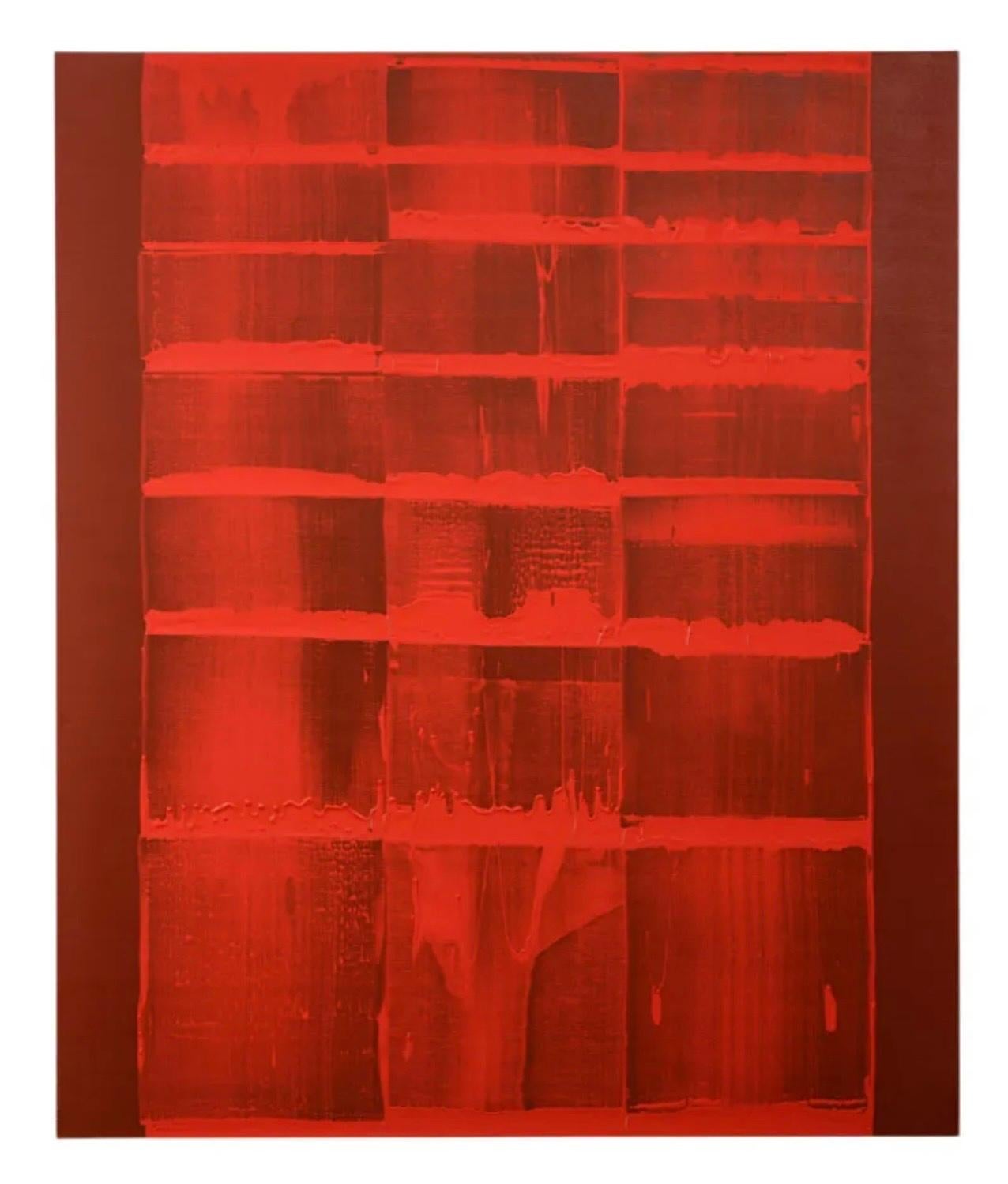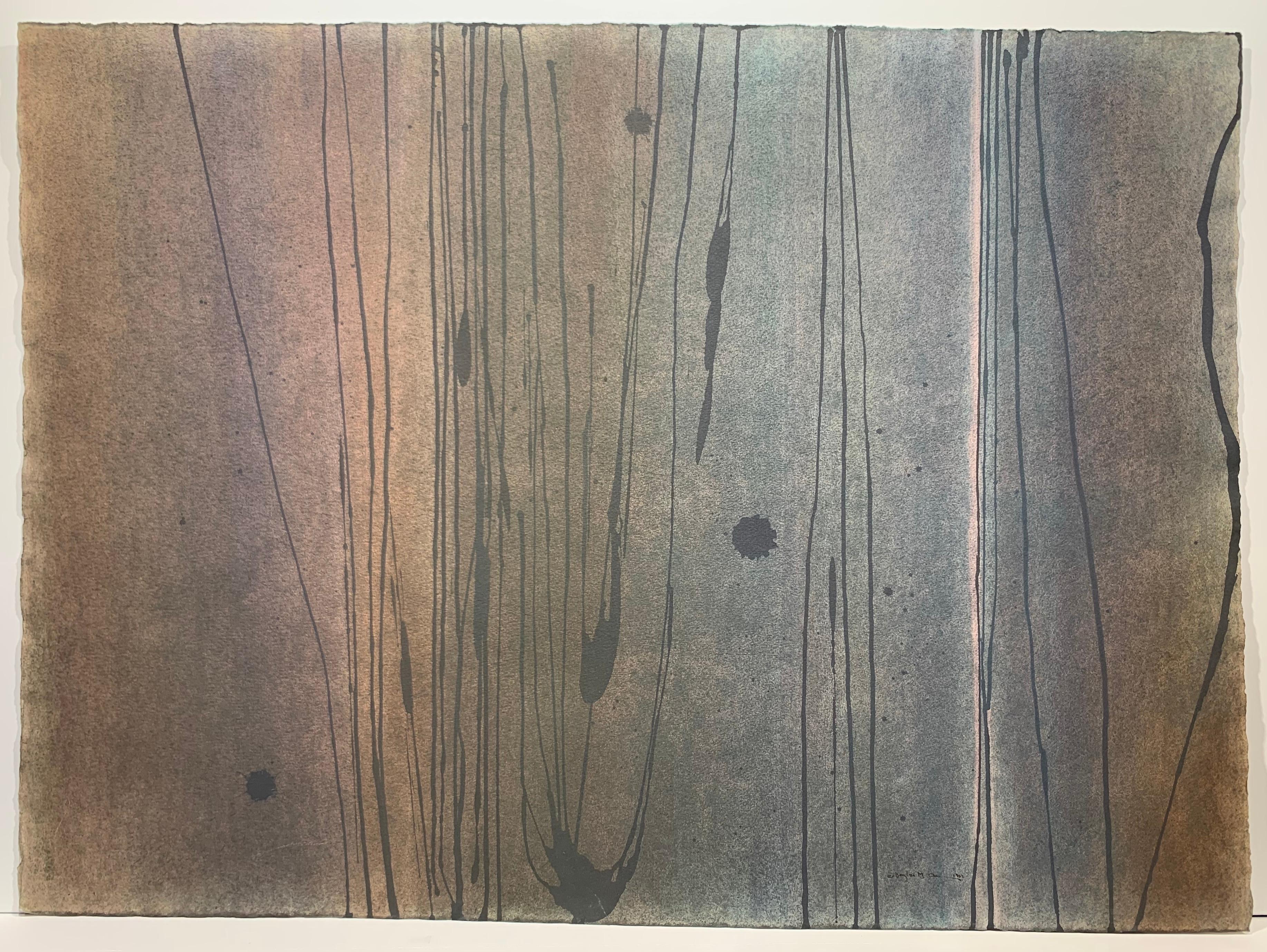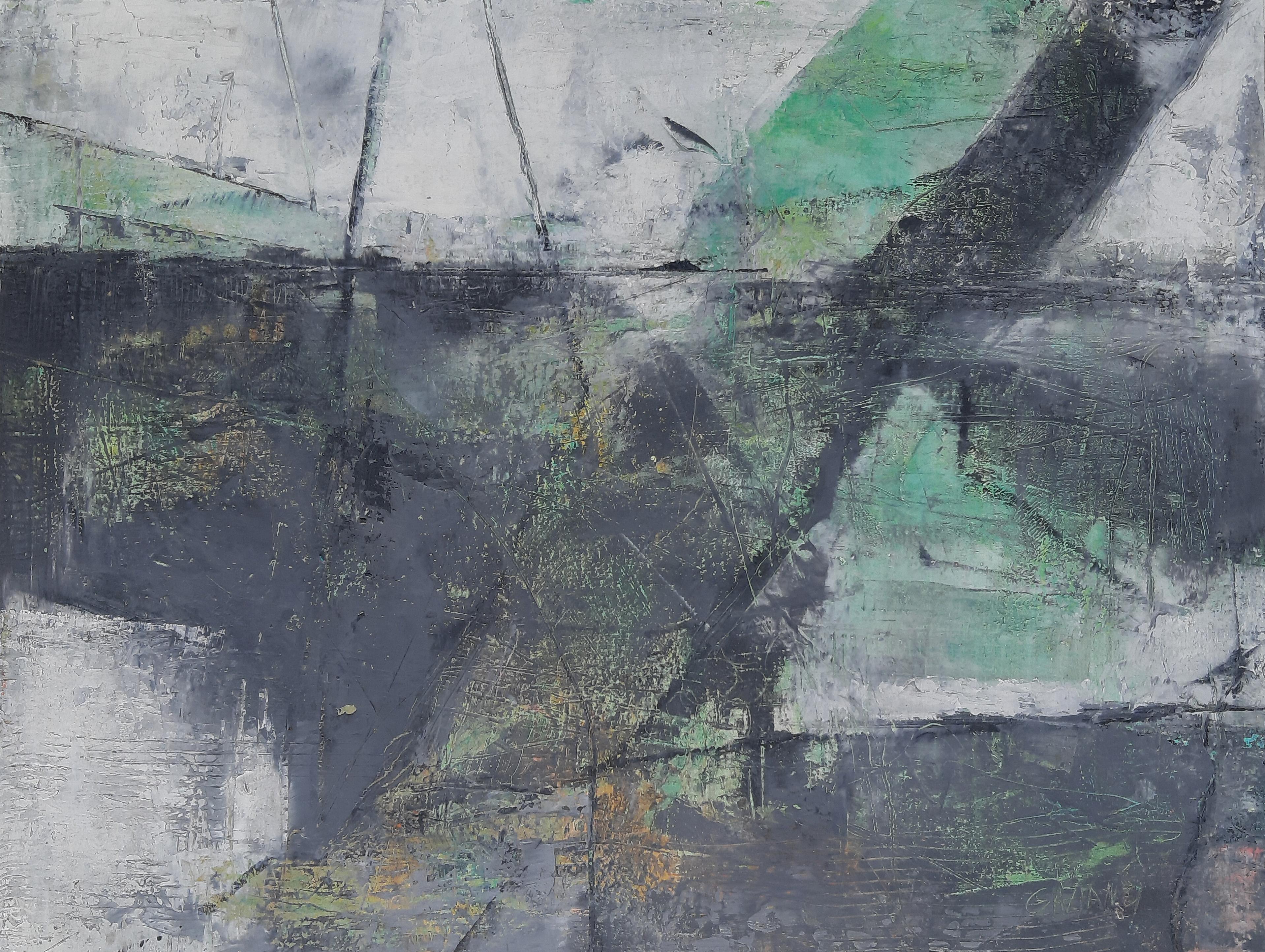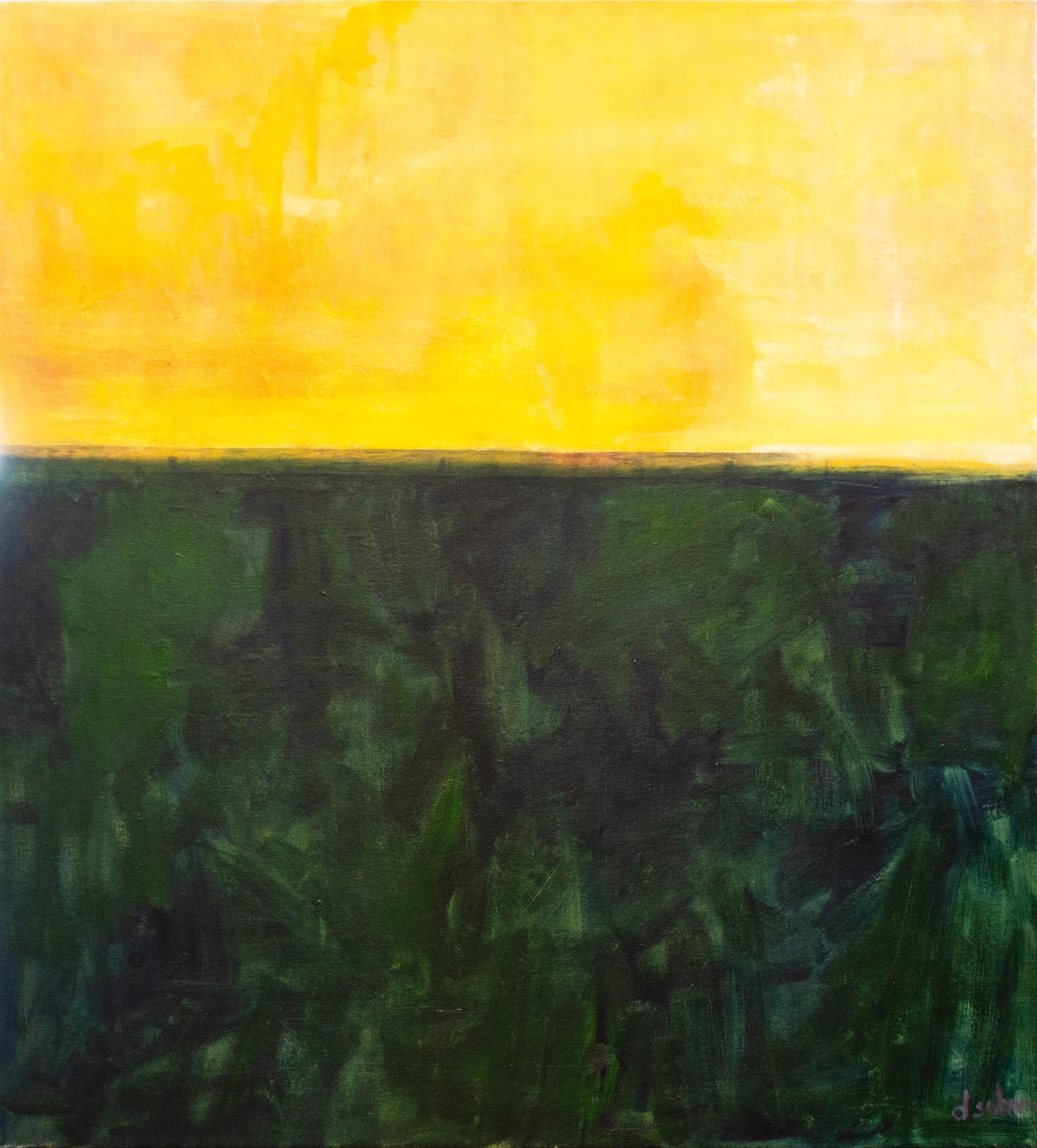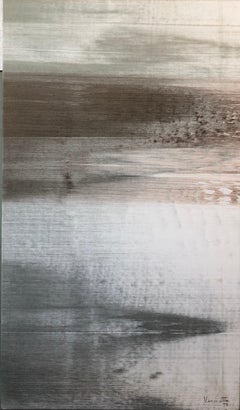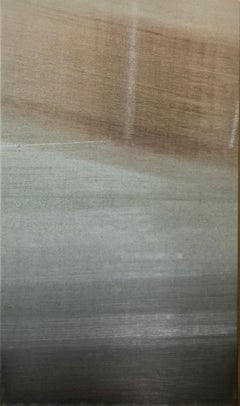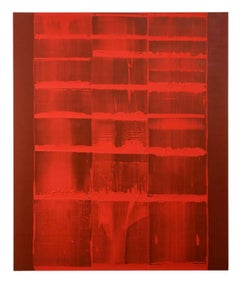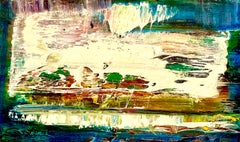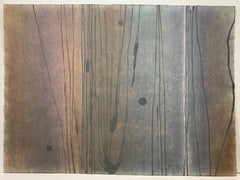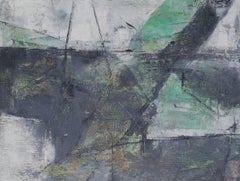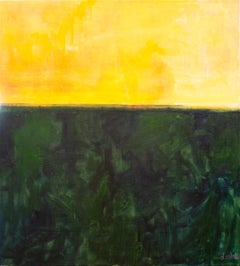Articles similaires à Peinture expressionniste abstraite moderniste canadienne Color Field Claude Vermette
Vous voulez plus d'images ou de vidéos ?
Demander au vendeur plus d'images ou de vidéos
1 sur 13
Claude VermettePeinture expressionniste abstraite moderniste canadienne Color Field Claude Vermette1994
1994
2 633,16 €
À propos de cet article
Claude Vermette R.C.A. is a Canadian ceramicist and painter who was born in Montreal, Quebec, August 10, 1930 and who died in Sainte-Agathe-des-Monts, April 21, 2006. Artist of international reputation, he made important contributions to the ceramic arts in Canada
As a ceramist who worked in the architecture field, Claude Vermette is a pioneer in Québec and in Canada with regards to this type of artistic expression. The bursts of colours of his wall size mural ceramics, the warmth of their hues and the play of their textures brought a human dimension in architectural spaces that were often grey and frigid. In his abstract paintings as well as in his prints and watercolours, Claude Vermette pursued this bold approach while constantly renewing and expanding the possibilities of colour and light. His work works with gradations of color field and shifting light.
A native of Montreal, Quebec, Claude Vermette studied art under the guidance of Brother Jerome, c.s.c. at Notre-Dame College while also attending the Collège Saint-Laurent and the college of the Clercs de Saint-Viateur for his academic studies. Through his contact with Brother Jerome, he met Paul-Emile Borduas and joined the Automatiste group of emerging artists. They were influenced by Surrealism and its theory of automatism. Members included Marcel Barbeau, Roger Fauteux, Claude Gauvreau, Jean-Paul Riopelle, Pierre Gauvreau, Fernand Leduc, Jean-Paul Mousseau, Marcelle Ferron and Françoise Sullivan. He was considered too young by Borduas to sign the 1948 "Refus Global" (Global denial), but he was present at the launch of this manifesto, which was destined to become famous in Québec's contemporary history. Drawing, painting and ceramics were then his main modes of expression.
His first exhibitions in 1948, 1950 and 1952 caused him to be noticed by art critics who praised his talent and perceived the promise a bright future. In 1952, his interest in ceramics expanded during a study tour in Europe and especially in Italy where he met the architect Gio Ponti, a major player in the rebirth of modern Italian design and founder of the magazine Domus and the sculptor-ceramist Fausto Melotti. Another decisive encounter is that of the Finnish architect, Alvar Aalto.
Thereafter, Claude Vermette concentrated his efforts on architectural ceramics for which he created new forms of composition for the clay, a wider variety of modules for tiles and bricks, and new patented enamels. All these innovations resulted in much appreciation regarding the quality and sustainability of his ceramics, notably in the context of the Canadian climate and its gruelling winters. His bricks and tiles also earned him the 1962 first prize for industrial design.
In 1953, the then 23 years old artist produced his first great work in ceramics: the huge background of the main altar and the whole ceiling of the new chapel of the Seminary of Chicoutimi. There followed a career of twenty-five years as ceramist characterized by close collaboration with architects and engineers, during which he produced large works in more than a hundred public buildings, including pavilions and buildings connected to the Montreal World's Fair in 1967, at Osaka in 1970, at the 1976 Summer Olympics held in Montreal as well as in many schools, churches, courthouses (including those in Montreal, St-Hyacinthe and at Percé in the Gaspé Peninsula ), hospitals (including those of Notre-Dame and Marie-Enfant in Montréal, and Amos in Abitibi), universities (including that of Montréal, McGill, Laval and Sherbrooke), government buildings, airports (Pierre Elliott Trudeau, Mirabel and Molton), in more than a dozen Montreal subway stations (including Saint-Laurent, Peel, Berri-UQAM, Laurier) and other buildings, including those of General Motors in New York City, MacMillan Bloedel in Vancouver, Bell Canada in Toronto, Canadian National, Canadian Pacific, Texaco Canada and Quebecor to name a few more. He also created many works, such as ceramic fireplaces mantles and wall murals for private mansions. His works are also found in museums, including the Montreal Museum of Fine Arts and the Musée national des beaux-arts du Québec. Vermette authored numerous projects for the integration of art into architecture, notably at the 1967 World’s Fair in Montreal, the 1970 World’s Fair in Osaka and the 1976 Olympic Games in Montreal. His ceramic designs (murals, halls, parquet floors) can still be found in schools, churches, courthouses, hospitals, airports and office buildings (Montreal, Toronto, New York), as well as in a dozen Montreal subway stations, including Saint-Laurent, Peel, Berri-UQAM and Laurier. Vermette also explored printmaking, bronze sculptures, watercolor painting and oil painting over the course of his career. At the time of his death, he had just completed the designs for five outdoor murals at the Pavillon du Lac des Castors in Mount Royal Park. These were unveiled in January 2006.
Claude Vermette also felt the need to pursue research that initially evolved into the creation of small-scale ceramic works where he experimented with new forms, textures and glazes and later also included engravings, sculptures and especially painting. He was further distinguished by mastery in engraving, taking advantage of relief materials that linked the play of light: evidenced by its white on white prints and art book Blanc-Seeing when it operates in its many variations, the latter accompanied by texts by the poet Eugene Cloutier. These prints have inspired the realization of small sculptures.
The artist uses his experiences as game textures, reliefs and light of his prints into white concrete works, thereby making the building for the Caisse populaire Laurier in Ottawa a dozen bas-reliefs of white concrete, large and small dimensions, varying textures, thicknesses and relief printed to the material. Vermette was also interested in creating watercolor works of all sizes such as, among them, a giant mural of over 80 meters long at Bell Trinity Square Office in Toronto. Another book of art is born, Gestes de Liberté, this time in collaboration with the economist, André Raynauld. Art and science! This challenge of uniting the work of a painter and that of an economist is reflected in the execution of this book which includes an abstract watercolor where dominate color and movement and a series of nine articles on the theme of freedom.
In the last thirty years of his life, Claude Vermette devoted most of his activity to painting. His works has been exhibited in Canada and abroad and is represented in the collections of public institutions, large corporations as well as private collections.
At the time of his death, he had just finished replacing the five exterior aluminium enameled murals he had created for the walls of the Beaver Lake Pavilion on Mount-Royal in Montréal, which were initially made in ceramic in 1958 and were unfortunately victims of demolition. This historic pavilion was renovated by the City of Montreal and inaugurated in January 2006. To mark the quality of the achievement, the City was awarded the Orange Prize 2006 by the organization Sauvons Montreal in category Intervention heritage.
He was the husband of the artist Mariette Rousseau-Vermette, tapestry weaver who, by the aesthetic and technical qualities of the tapestries and the impressive number of monumental works, has earned an international reputation. The couple who had two children lived in Ste-Adele. Both had a professional art career that spans over a period of sixty years.
Selected commissions and collections:
Canadian National Bank, Montreal, Canada;
General Motors corporate offices, New York, New York;
Macmillan Bloedel corporate offices, Vancouver, Canada;
Hall of Justice, Montreal, Canada;
Bell Canada, Toronto, Canada;
Hoffman BMW, Bloomfield, New Jersey;
Coopers Lybrand, Montreal, Canada;
Molton International Airport; Toronto, Canada;
Laurier Bank, Ottawa, Canada;
McGill University, Montreal.
Member: Royal Canadian Academy of Arts.
- Créateur:
- Année de création:1994
- Dimensions:Hauteur : 78,74 cm (31 po)Largeur : 45,72 cm (18 po)Profondeur : 5,08 cm (2 po)
- Support:
- Mouvement et style:
- Période:
- État:good. minor wear. please see photos.
- Adresse de la galerie:Surfside, FL
- Numéro de référence:1stDibs : LU38215092702
À propos du vendeur
4,9
Vendeur Platine
Vendeurs premium dont la note est supérieure à 4,7 et le délai de réponse de 24 heures maximum
Établi en 1995
Vendeur 1stDibs depuis 2014
1 817 ventes sur 1stDibs
Temps de réponse habituel : 1 heure
- ExpéditionRecherche du devis...Expédition depuis : Surfside, FL
- Politique des retours
Certaines parties de cette page ont été traduites automatiquement. 1stDibs ne garantit pas l'exactitude des traductions. L'anglais est la langue par défaut de ce site web.
Garantie d'authenticité
Bien qu'il soit peu probable que la situation se présente, dans le cas où vous rencontreriez un problème d'authenticité d'un article, contactez-nous dans un délai d'un an pour obtenir un remboursement intégral. DétailsGarantie de remboursement
Si votre article n'est pas conforme à la description, est endommagé pendant le transport ou ne vous est pas livré, contactez-nous sous 7 jours pour obtenir un remboursement intégral. DétailsAnnulation sous 24 heures
Vous disposez d'un délai de 24 heures pour annuler votre achat sans motif.Des vendeurs professionnels agréés
Nos vendeurs de renommée mondiale doivent respecter des normes strictes en matière de service et de qualité, afin de préserver l'intégrité de nos fiches produit.Garantie d'alignement des prix
Si vous constatez qu'un autre vendeur a mis en vente le même article à un prix inférieur sur un autre site, nous nous alignerons sur ce prix.Livraison en toute confiance à l'international
Notre réseau de transporteurs de premier ordre propose des options d'expédition spécialisées dans le monde entier, y compris des livraisons personnalisées.Plus d'articles de ce vendeur
Tout afficherPeinture expressionniste abstraite moderniste canadienne Color Field Claude Vermette
Par Claude Vermette
Claude Vermette R.C.A. est un céramiste et peintre canadien né à Montréal (Québec) le 10 août 1930 et décédé à Sainte-Agathe-des-Monts le 21 avril 2006. Artistics de réputation internationale, il a apporté d'importantes contributions aux arts céramiques au Canada
Céramiste ayant travaillé dans le domaine de l'architecture, Claude Vermette est un pionnier au Québec et au Canada en ce qui a trait à ce type d'expression artistique. Les éclats de couleurs de ses céramiques, la chaleur de leurs teintes et le jeu de leurs textures apportent une dimension humaine à des espaces architecturaux souvent gris et froids. Dans ses peintures abstraites comme dans ses gravures et ses aquarelles, Claude Vermette a poursuivi cette démarche audacieuse en renouvelant et en élargissant sans cesse les possibilités de la couleur et de la lumière. Son travail s'appuie sur des gradations de champs de couleurs et des changements de lumière.
Originaire de Montréal, au Québec, Claude Vermette a étudié l'art sous la direction du frère Jérôme, C.I.C., au collège Notre-Dame, tout en fréquentant le collège Saint-Laurent et le collège des Clercs de Saint-Viateur pour ses études académiques. Au contact du frère Jérôme, il rencontre Paul-Émile Borduas et rejoint le groupe d'artistes émergents Automatiste. Ils ont été influencés par le surréalisme et sa théorie de l'automatisme. Les membres sont Marcel Barbeau, Roger Fauteux, Claude Gauvreau, Jean-Paul Riopelle, Pierre Gauvreau, Fernand Leduc...
Catégorie
années 1990, Expressionnisme abstrait, Peintures - Abstrait
Matériaux
Toile, Huile
Peinture expressionniste abstraite moderniste canadienne Color Field Claude Vermette
Par Claude Vermette
Claude Vermette R.C.A. is a Canadian ceramicist and painter who was born in Montreal, Quebec, August 10, 1930 and who died in Sainte-Agathe-des-Monts, April 21, 2006. Artist of inter...
Catégorie
années 1990, Expressionnisme abstrait, Peintures - Abstrait
Matériaux
Toile, Huile
Grande peinture à l'huile Champ de couleurs, minimaliste, expressionniste abstrait John Zinsser
Par John Zinsser
John Zinsser
(Américain, né en 1961)
Ville de fer, 1997
huile sur toile
signé John Zinsser, titré et daté (verso)
72 x 60 pouces
Réalisé dans des tons rouges vifs et éclatants.
L'a...
Catégorie
années 1990, Expressionnisme abstrait, Peintures - Abstrait
Matériaux
Toile, Huile
Peinture à l'huile expressionniste américaine abstraite et vivante de Norman Carton, artiste de la WPA
Par Norman Carton
Norman Carton (1908 - 1980) était un artiste et éducateur américain connu pour son art expressionniste abstrait. Il est né dans la région ukrainienne de la Russie impériale et a démé...
Catégorie
Milieu du XXe siècle, Expressionnisme abstrait, Peintures - Paysage
Matériaux
Toile, Huile
Grande peinture à l'huile abstraite moderniste californienne Laddie John Dill
Par Laddie John Dill
Laddie John Dill (américain, né en 1943)
Sans titre
Peinture à l'huile sur toile montée sur panneau
Signé Laddie Dill (verso)
36 x 72 pouces. (avec cadre 37 X 73)
Laddie John Dill e...
Catégorie
Années 1980, Postmoderne, Peintures - Abstrait
Matériaux
Toile, Huile, Planche
Peinture expressionniste abstraite contemporaine autrichienne Lignes verticales de couleur
Par Rudi Molacek
Rudi Molacek (Américain d'origine autrichienne, né en 1948)
Vertical Colors, 2008, acrylique abstraite et lumineuse sur toile, signée et datée le long du bord supérieur de la toile, ...
Catégorie
Début des années 2000, Contemporain, Peintures - Abstrait
Matériaux
Toile, Acrylique
Suggestions
n°135 (peinture expressionniste abstraite)
Par Douglas M. Olsen
Douglas M. Olsen (né en 1960). #135, 1982. Aquarelle sur papier chiffon, 22 x 30 pouces. Signé dans la marge inférieure et au verso.
Catégorie
20ième siècle, Expressionnisme abstrait, Peintures - Abstrait
Matériaux
Aquarelle, Papier chiffon
175 € Prix de vente
60 % de remise
Abstrait 3, peinture à l'huile abstraite
Commentaires de l'artiste
Des tons plus clairs de vert et de blanc contrastent avec les éléments gris de cette composition abstraite. Les rayures autour de l'œuvre donnent une ...
Catégorie
XXIe siècle et contemporain, Abstrait, Peintures - Abstrait
Matériaux
Huile
« One Syllable », champs de couleurs abstraits, huile sur toile de Deirdre Schanen
Par Deirdre Schanen
"One Syllable" est une huile sur toile de Deirdre Schanen. Des champs de couleurs sont créés les uns à côté des autres. Un ciel jaune est créé dans la partie supérieure de la pièce a...
Catégorie
années 2010, Contemporain, Peintures - Abstrait
Matériaux
Toile, Huile
Peinture à l'huile expressionniste française abstraite du 20e siècle - Blaze of Colors
Composition expressionniste abstraite
signé par Andre Guillou (français 1925-2017)
huile sur carton
planche : 25 x 19.75 pouces
provenance : succession de l'artiste, France
état : tr...
Catégorie
Milieu du XXe siècle, Expressionnisme abstrait, Peintures - Abstrait
Matériaux
Huile
796 € Prix de vente
20 % de remise
Série Paysage abstrait 6HTJ7, Peinture abstraite, 21e siècle
Par Roger König
Artiste : Roger König, né à Dessau, Allemagne (1968), élève de Kurt Schönburg, HWK Halle, Allemagne. König combine la peinture moderne à l'acrylique avec des techniques anciennes et,...
Catégorie
années 2010, Abstrait, Peintures - Paysage
Matériaux
Argile, Acrylique
"Boundary Between", peinture à l'huile abstraite
Cette peinture abstraite verticale originale de Tony Iadicicco est réalisée avec de la peinture à l'huile sur toile emballée. Cette pièce présente trois lignes horizontales parallèle...
Catégorie
années 2010, Abstrait, Peintures - Abstrait
Matériaux
Toile, Huile
